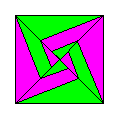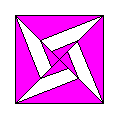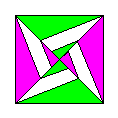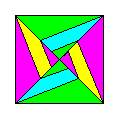| Origami Heaven A paperfolding
paradise
The website of
writer and paperfolding designer David Mitchell
|
| |
|
| |
| Modular
pattern is the way in which the visible surface of the
form is broken down into visually distinct regions. There are four different
possibilities for modular pattern.
|
| |
 |
|
Multi-colour
patterns Multi-colour patterns are patterns
formed by combining modules whose visible
surface, after assembly is finished, is all the
same colour / pattern combination. These can be
called plain modules.
|
|
| |
| Contrast patterns Contrast patterns
are patterns formed by combining modules folded
from paper which is coloured / patterned on one
surface and white on the other and which are
folded in such a way that their visible surface,
after assembly is finished, is divided into
visually distinct regions corresponding to the
differentiated surfaces of the paper. These can
be called contrast modules.
|
|
 |
|
| |
 |
|
Multi-colour
contrast patterns As the name suggests, multi-colour
contrast patterns are a combination of
multi-colour and contrast patterns made by
combining contrast modules folded from irogami of
more than one colour.
|
|
| |
| Multi-colour duo
patterns The final possibility is to produce
multi-colour duo patterns by combining contrast
modules folded from duo paper, where the colours
on the reverse surfaces of the various colours of
paper used are also different from each other.
This kind of modular pattern is rarely seen.
|
|
 |
|
| |
| |



